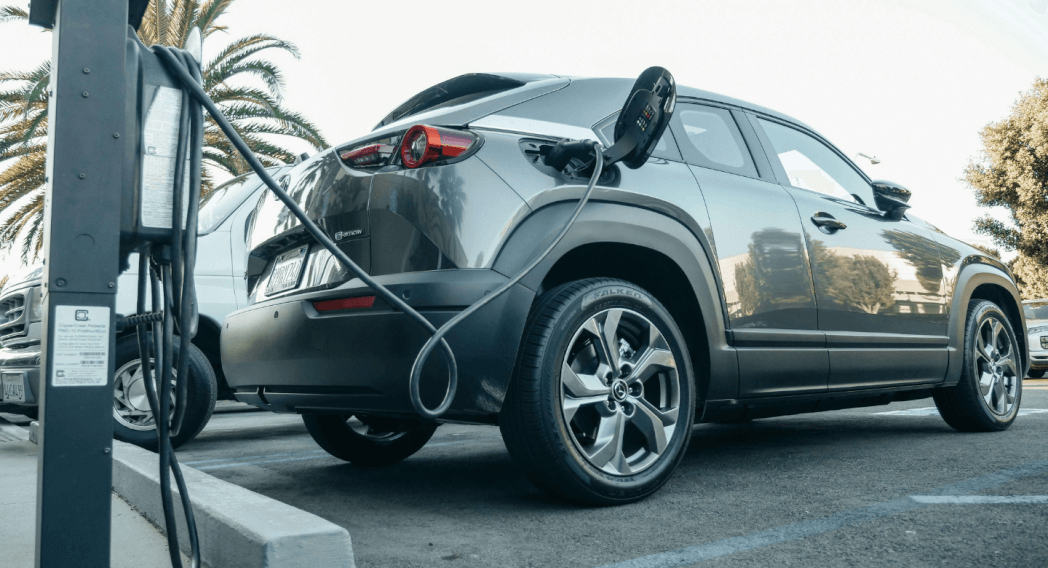7 Reasons Why Electric Vehicles Are the Future of Transportation
Electric vehicles (EVs) are revolutionizing transportation by reducing reliance on fossil fuels and cutting harmful emissions. Electric vehicles are powered by electricity and offer a cleaner, greener alternative to traditional vehicles. From improved energy efficiency to lower costs, EVs are paving the way for a sustainable future.
Table of Contents
ToggleIn this blog, we’ll explore 7 reasons why electric vehicles are the future of sustainable transportation and how they can help pave the way to a cleaner, healthier planet.
What are Electric Vehicles (EVs)?
EVs, or electric vehicles, are cars powered by electricity instead of gasoline. They use a battery to run an electric motor, making them more eco-friendly and efficient.
There are four types of electric vehicles:
- Battery Electric Vehicle (BEV): Fully powered by electricity and is the most efficient.
- Hybrid Electric Vehicle (HEV): Combines a gasoline engine and an electric motor; the engine helps charge the battery.
- Plug-in Hybrid Electric Vehicle (PHEV): Similar to HEVs, but the battery can be charged from an external socket for more electric-only driving.
- Fuel Cell Electric Vehicle (FCEV): Uses chemical energy, like hydrogen, to create electricity for the motor.
Reasons Why Electric Vehicles Are the Future
1. Reduced Carbon Emissions

Lower CO₂ Output:
Electric vehicles (EVs) produce significantly fewer carbon emissions than traditional internal combustion engine (ICE) vehicles. By using electricity instead of fossil fuels, EVs help reduce greenhouse gas emissions, which are a major contributor to climate change.
Impact on Air Quality:
EVs don’t emit tailpipe pollutants such as nitrogen oxides (NOx) and particulate matter, which are harmful to human health and the environment, especially in urban areas. In cities, where pollution is a significant problem, switching to EVs can significantly improve air quality.
Evidence: A report from the International Council on Clean Transportation suggests that EVs can reduce air pollution by up to 90% compared to traditional vehicles in urban settings.
2. Energy Efficiency
Superior Conversion Efficiency:
EVs are highly efficient in converting energy from the grid to power the wheels. While gasoline vehicles only convert 12-30% of the energy from fuel into actual motion, EVs can convert over 77% of the energy from electricity into usable power at the wheels.
Reduced Energy Waste:
Because EVs waste far less energy compared to traditional vehicles, they require less energy to travel the same distance, which contributes to their overall environmental benefits.
3. Lower Operating Costs

Less Maintenance Required:
EVs have fewer moving parts than traditional vehicles with internal combustion engines. This means fewer components can wear out or break, resulting in lower maintenance and repair costs over the lifetime of the vehicle.
Cheaper Fueling:
Charging an EV is often significantly cheaper than refueling a traditional gasoline or diesel vehicle. Depending on local electricity rates and charging methods, the cost of charging can be one-third to one-half the price of filling up with gasoline.
4. Advancements in Battery Technology

Improved Battery Efficiency:
Battery technology has made rapid advancements in recent years, improving the range, charging speed, and overall efficiency of EVs. This makes electric vehicles more practical for everyday use.
Solid-State Batteries and Innovations:
Future battery technologies, such as solid-state batteries, promise even greater improvements. These next-gen batteries are expected to offer:
- Faster Charging Times: Solid-state batteries could charge 5-10 times faster than current lithium-ion batteries.
- Improved Safety: These batteries are less prone to overheating or catching fire, increasing the safety of EVs.
5. Integration with Renewable Energy

Storage for Excess Energy:
During times when solar panels or wind turbines generate more energy than is needed (e.g., during sunny days or windy conditions), EVs can store that excess energy in their batteries. This energy can then be used later or returned to the grid when there’s high demand.
Vehicle-to-Grid (V2G) Technology:
Some EVs are equipped with vehicle-to-grid (V2G) capabilities, which allow them to feed energy back into the grid during peak usage times, reducing the strain on the energy infrastructure and supporting a more sustainable and resilient energy system.
6. Reduction in Air and Noise Pollution

One of the most significant benefits of EVs is their complete elimination of tailpipe emissions. Unlike traditional vehicles that emit carbon dioxide (CO₂), nitrogen oxides (NOx), and particulate matter (PM), EVs have zero tailpipe emissions.
Health Benefits:
Reducing air pollution from vehicle exhaust has major public health benefits. Studies have shown that poor air quality from vehicle emissions contributes to respiratory diseases, heart problems, and premature deaths. A report from the European Environment Agency estimated that poor air quality from road transport causes over 400,000 premature deaths annually in Europe alone.
Reducing Noise Pollution:
In addition to air quality improvements, EVs also help reduce noise pollution. Traditional gasoline and diesel vehicles generate significant noise from their engines and exhaust systems, particularly in urban areas.
7. Global Policy Support and Incentives
Governments worldwide are incentivizing EV adoption through subsidies, tax benefits, and investments in charging infrastructure. With countries setting deadlines to phase out ICE vehicles, EVs are positioned as the transportation standard of the future, aligning with global sustainability goals.
Subsidies and Tax Benefits:
Many countries like the U.S., and India offer financial incentives such as rebates, tax credits, and lower registration fees to reduce the upfront cost of EVs. For example, the U.S. offers up to $7,500 in federal tax credits for qualifying electric vehicles, while the European Union has introduced incentives for consumers and businesses to buy EVs.
Investment in Charging Infrastructure:
Governments are also investing in widespread EV charging networks, ensuring that there are enough charging stations to support the growing number of electric vehicles on the road.
Conclusion
Electric vehicles (EVs) are not just a step forward—they are the cornerstone of a sustainable transportation future. By reducing emissions, improving energy efficiency, and embracing renewable energy, EVs offer solutions to pressing environmental challenges. With advancements in technology and global support, EVs are transforming mobility into an eco-friendly, cost-effective, and accessible solution for all.
References
10 reasons why electric vehicles are the future of transportation. (n.d.).
Alternative Fuels Data Center: Electric vehicle benefits and considerations. (n.d.).
Frequently Asked Questions (FAQs) on 7 Reasons Why Electric Vehicles Are the Future
Are electric vehicles truly environmentally friendly?
Yes, EVs produce zero tailpipe emissions and have a smaller carbon footprint than traditional vehicles, especially when charged with renewable energy.
How do EVs reduce air pollution?
By eliminating the burning of fossil fuels, EVs significantly lower harmful pollutants like carbon dioxide and nitrogen oxides, improving air quality.
Are EVs more cost-effective than traditional cars?
Yes, EVs have lower operating costs due to cheaper electricity and reduced maintenance needs, though the upfront cost can be higher.
What is the range of an electric vehicle?
Modern EVs typically have a range of 150–400 miles on a full charge, depending on the model and battery capacity.
How long does it take to charge an EV?
Charging time varies by the charger type: Level 1 (8–12 hours), Level 2 (4–6 hours), and fast chargers (30 minutes to 1 hour).
What happens to EV batteries after their life cycle?
EV batteries can be recycled or repurposed for secondary uses like energy storage, reducing environmental impact.
Are there enough charging stations for EVs?
The number of charging stations is rapidly growing, with governments and private companies investing heavily in charging infrastructure worldwide.
Can EVs be powered entirely by renewable energy?
Yes, EVs charged with solar, wind or hydroelectric power become almost entirely emission-free, further reducing their environmental impact.
Are EVs suitable for long-distance travel?
Yes, with improving ranges and fast-charging networks, EVs are increasingly capable of handling long-distance trips.
Are governments supporting the adoption of EVs?
Many governments offer incentives like tax rebates, subsidies, and investments in infrastructure to encourage EV adoption and meet climate goals.







